
We’ve had an arm-full of great books coming into the office lately; these are the books that get us excited about what’s going on the the world. Check them out and let us know what’s on your list.

It’s Lonely in the Modern World: The Essential Guide to Form, Function, and Ennui from the Creators of Unhappy Hipsters by Molly Jane Quinn and Jenna Talbott, $20
Chronicle Books
If you have ever seen Unhappyhipsters.com, or can succinctly define ennui without consulting a dictionary, you know what you are getting yourself into with this one. The snark is hefty, and yet, we can’t help but nod in approval at the author’s design suggestions. And that’s the great thing with the book versus the website — where we once laughed and tried to recall which Dwell issue a photo appeared in, we now laugh at material choices … and then actually consider them. From hipster-approved shades of white to paint your walls, to baby names, to minimalist landscaping suggestions, It’s Lonely in the Modern World covers the whole gamut. That said, we can’t help but want more. But maybe that’s the maximalist in us refusing to give in and love this sparse slab of print and image for what it is. Above all else, this work is a great reminder of one of our most loved design tools: the ability to laugh at yourself.
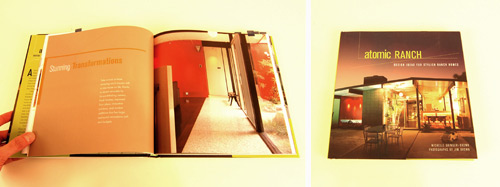
Atomic Ranch, Design Ideas for Stylish Ranch Homes by Michelle Gringeri-Brown, $40
Gibbs Smith
The publishers of Atomic Ranch Magazine have curated this hard-bound book in a manner that anyone who has visited the website or perused their magazine has come to expect: A collection of well-composed photographs highlighting the beauty of these mid-century modern residential gems. Whether Gringeri-Brown showcases the expected works of Joseph Eichler or the Arapaho Acres development, she doesn’t shy away from what may sometimes be strange and kitschy. The content in each chapter brings to surface the true heart of these homes of eras past, combining anecdote with honesty in presenting the challenges and joys of owning and living in one of these treasured homes.

The Architecture of EMPAC: The Tangible and the Tantilizing by Mark Mistur, $40
ORO editions
Opened in 2008, the Experimental Media and Performic Arts Center (EMPAC) at Rensselar Polytechnic Institute, brought forth the physical manifestations of a vision for an educational space whose main objective was to serve as an incubator for creativity, a mixing chamber for the technical and the creative. In real time. The Architecture of EMPAC explores the process of the building from inception through construction. With just a crack of the book, we were hooked. This one deserves a thorough read-through, not only because of the glossy photographs and diagrams of the building (to say nothing of the time-lapse video of the building construction included in the companion dvd), but the concept behind the school itself. At its heart, EMPAC taps into the heart of design and the creative process.

The Modernist by R. Klanten, $55
Gestalten
This is more than just your average design-caliber picture book. Each page is filled with the works of graphic designers who are redefining what it means to create a movie or band poster. You’ve seen the images before, perhaps playing the endlessly entertaining online quiz of minimalist movie posters. Or bumping into a favorite, Jason Munn of The Small Stakes, at a live poster show like Bumbershoot’s annual Flatstock exhibit. Regardless of your level of familiarity, these images will make you think and make you laugh and likely spark some creative inspiration. We’re confident you’ll find some new designers to follow after one quick perusal of The Modernist.

The Heights: Anatomy of a Skyscraper by Kate Ascher, $35
The Penguin Press
Ascher brings yet another gem into the designer’s library with this addition to what is becoming her Anatomy Of series. Her previous book, The Works: Anatomy of a City delved into the inner workings of New York City in great detail, complete with eye-candy infographics equally heavy on both the information and graphics. The Heights is no exception. Scaling down a bit to explore the world of the high-rise building, Ascher presents a textbook-caliber coffee table book that grabbed us from the first pages recounting the history, and kept us going as she dug deeper into the inner workings of the engineering marvel of the skyscraper. Architects and civilians alike will find themselves absorbed in the journey inside this now ubiquitous building form. If Ascher continues to publish books in this series, she will quickly become a favorite on the Architect’s library shelves.
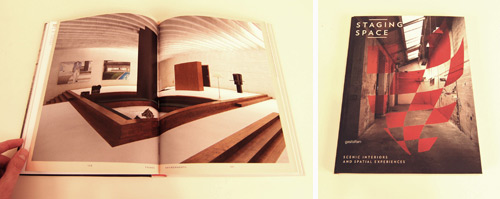
Staging Space by Robert Klanten, $69
Gestalten
Before a single page is turned, the cover and title of Klanten’s book kickstarts the conversation. It brings to surface a deluge of questions:
What is space? What is a stage? Does staging exclusively imply the ephemeral?
Once we dug into its pages, we were unmistakably drawn to the re-inventive explorations of both stage and space explored in this book. Out of the box is an understatement. In fact, most of the projects highlighted are interior spatial manipulations, inviting the reader into the triple point of theater, sculpture, and architecture. What the book lacks in text, it makes up for tenfold in image content and project diversity. The projects are eye-popping and garner second, third, and fourth glances. Covering all the bases of what we’d expect out of this vocabulary from runways to abstract interiors, our imaginations and curiosities were officially piqued. Some of it delighted us, some made us recoil. But Staging Space nails its performance as inspiration fuel, and we’re confident you’ll spend some serious time pawing through its pages. At least we did.
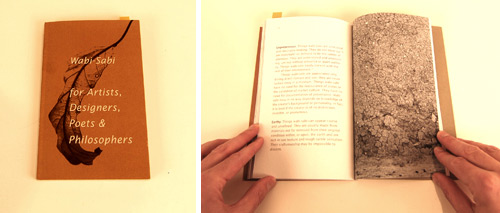
Wabi-Sabi: For Artists, Designers, Poets & Philosophers by Leonard Koren $10
Stone Bridge Press
As the title suggests, this isn’t just a book for architects. Keeping itself to the parameters of wabi-sabi, this brief essay simply and thoroughly lays out the fundamental principles of this Japanese philosophy with calm conviction. Wabi-sabi is a beauty of things imperfect, impermanent, and incomplete. It is a beauty of things modest and humble. It is a beauty of things unconventional. These are words every artist and every human can relate to. And those familiar with Japanese architecture and design will understand the connection between this tenet and its materializations. The integrity and ultimate force of wabi-sabi lies in the fact that it is not just a physical aesthetic nor a philosophy for life; it permeates the wholeness of all things at all scales.
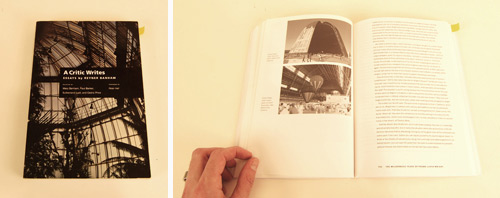
A Critic Writes, Selected Essays by Reyner Banham, $30
University of California Press
Although Banham’s compilation is over a decade old now, we find ourselves referring to it all the time. For Architects that have been around the block a few times, it’s a great reminder of Banham’s intelligence and ability to focus on the raw issues; for students coming up the ranks it’s a great primer on a critic who examined (and often questioned) the authenticity and integrity of the Architecture profession. It also contains an essay that is, perhaps, the most apropos piece of writing of our time: “A Black Box The Secret Profession of Architecture”. Very few Architectural critic books line our shelves; this text is deliberately one of the few.
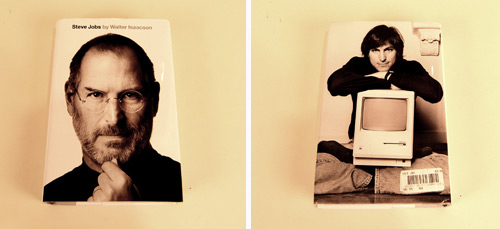
Steve Jobs by Walter Isaacson, $25
Simon & Schuster
While this biography may not fall directly under the umbrella of “design books” the aesthetic insight it conveys is remarkable. We devoured this book from beginning to end and it does more for our thinking about design, as evidenced by last week’s post about Jobs’ influences, than a dozen of our cherished “architectural” books put together.
Following the trajectory of the most valuable brand in the universe, the book explains nearly everything: why an iPhone looks the way it does, Jobs’ highly personal method of management and how to guard yourself against a Reality Distortion Field. Whether you consider Jobs a deity or a devil, this is an important book about great design, influence, how far to push things… and the consequences of doing so.
The book does have a couple of blind spots, however. While Isaacson mentions Jobs’ adversity to charities, the book never really delves into the reasoning –which is an important issue given Jobs’ net worth of over $8 billion. Isaacson doesn’t cover the enormous public response to Jobs’ passing either; the gravity of candle-lit shrines placed at Apple stores around the world, and the flowery tribute in front of Jobs’ personal residence in Palo Alto oddly don’t play a role in the book’s closure.

Old Buildings, New Designs by Charles Bloszies, $25
Princeton Architectural Press
This jewel of a book is an elegant and useful guide into the world of architecture where old and new merge within a single building. Bloszies uncovers the unique challenges, jurisdictional realities, and beauty in this process. A process which ultimately results in a harmonious, if not submissive, relationship between history and the moment. Neither overly technical nor overly glossy, this book strikes the perfect balance for the whole-minded designer. A series of head-turning case studies highlighting different scales and relationships – the restrained, referential, or extreme – between the old and new was just enough to whet our appetites and elicit a desire to conduct follow-up research on some of the featured designers.
A QUICK NOTE: We adamantly support local bookshops and are loyal supporters of urbanism and community. We encourage you to vote with your money and support exceptional book stores like Peter Miller Books in Seattle, William Stout Architectural Books in San Francisco, Powell’s Books in Portland and many more around the country that foster culture and community.
A QUICK DISCLAIMER: We don’t read all of these books from cover to cover -as we’re very busy designing and building things most days. Our reviews are based on a variety of aspects such as how we use the books in our office and how often they end up open on our desks (as opposed to passively sitting on the bookshelf). The reviews are often based on skimming the books or mining them for specific information. We’re not professional writers or book reviewers; we’re just architects that can’t stop talking about architecture.
Got a book suggestion or want to involved in the play by play? Hop on our twitter account.





